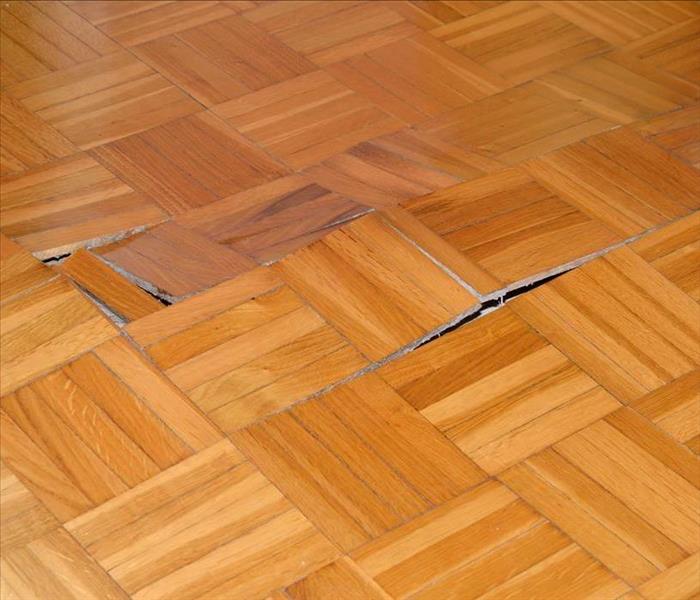A Pipe Burst Has Flooded My Hardwood Floor! Now What?
10/12/2021 (Permalink)
 Hire water professionals to avoid mold damage after a pipe bursts in your Greenville, NC, commercial.
Hire water professionals to avoid mold damage after a pipe bursts in your Greenville, NC, commercial.
If your Greenville, NC, commercial building has hardwood floors, a burst pipe could be tragic. Depending on the amount of water, it may or may not be salvageable. There is hope, however. You can take some simple steps that will give you the best chance of saving most, if not all, your floor. Being proactive and learning them ahead of time may one day mean the difference between some light repairs and total tear-out.
Steps for Drying a Wood Floor
1. Extract the Standing Water
The most efficient way to remove the standing water is with a wet/dry vacuum. Use a squeegee to pull the water towards the vacuum hose to get it up quicker. If you don't have a wet/dry vacuum available, a mop or towels will do the job.
2. Clean and Disinfect the Floor
Wash the floor with a gentle soap and disinfectant solution mixed with warm water. Scrubbing the floor and baseboards with a stiff brush, cleaning as much dirt and organic material away as possible can help prevent mold growth. Mold spores are virtually everywhere. However, mold needs a food source to survive and grow. The mold spores already there will have less opportunity to grow into a full-blown mold infestation on a clean, sanitized floor.
3. Look Out for Mold
Hiring water damage restoration professionals is highly recommended after a pipe burst to inspect for and get rid of mold. They have the expertise and industrial equipment to ensure the mold is completely gone as quickly as possible and won't come back. However, if you opt to tackle this task yourself, use a mold killer such as trisodium phosphate and a stiff brush to scrub away mold or any suspect discoloration. Contrary to popular belief, you should NOT use bleach; it will only temporarily remove the mold. Finally, after cleaning it thoroughly, rinse the area with clean water (and a damp cloth; don't pour the water on the floor) and dry it immediately. Then, inspect the area for signs of mold and additional water damage.
4. Dry Everything Thoroughly, Yet Steadily
Now, it's essential to dry the floor thoroughly, but wood flooring must be dried steadily and not too fast; otherwise, it can crack. Mold can take hold quickly, beginning growing within 24 hours of water exposure. If the outdoor humidity is lower than the indoor humidity, you can open doors and windows to enable the fresh air to flow through the space. You can also run fans and dehumidifiers.
An influx of water from a pipe burst is never a good thing. When you have a wood floor, it can rise to a whole new level of severity. Hardwood floors are beautiful, but they also take more maintenance and care than other types of flooring. Although a hardwood floor will probably sustain some irreparable damage, there are ways to combat the severity loss if you quickly begin the wet floor cleanup process. After an influx of water, time is not on your side; every second counts in preventing additional loss. Knowing how to deal with this situation in advance can be a tremendous help should the situation arise.




 24/7 Emergency Service
24/7 Emergency Service